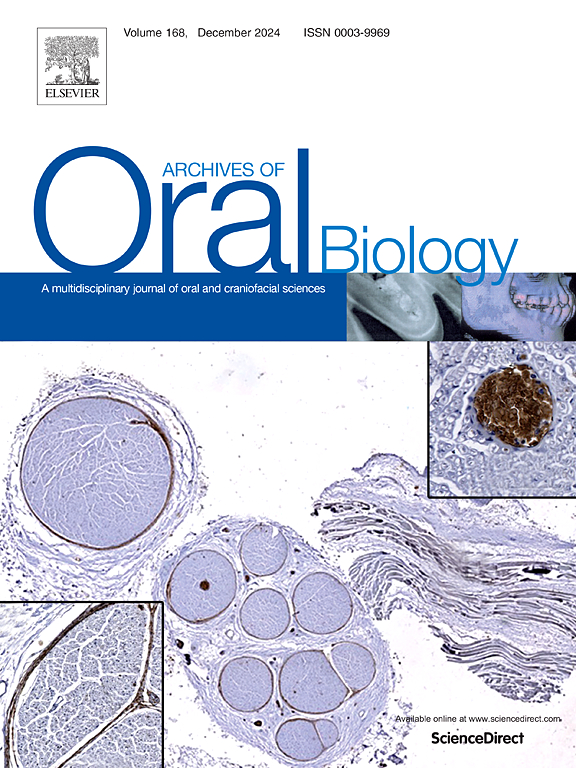Distinct oral microbiome profiles in substance users in the high-incidence Mizo tribal community, Northeast India
IF 2.1
4区 医学
Q2 DENTISTRY, ORAL SURGERY & MEDICINE
引用次数: 0
Abstract
Objectives
To characterize the oral microbiome of substance users (primarily tobacco, alcohol, and opioids) compared to healthy controls in the high-incidence Mizo tribal community of Northeast India, and to examine their association with food and lifestyle habits.
Methods
Saliva samples from 53 substance users and 35 healthy controls were subjected to 16S rRNA (V3–V4 region) sequencing. Alpha and beta diversity analyses, differential abundance testing, and microbial functional prediction were conducted. Statistical analyses were corrected for multiple comparisons using false discovery rate (FDR) adjustment where applicable. Associations with food and lifestyle habits were also examined.
Results
Substance users exhibited significantly lower alpha diversity, and beta diversity analyses revealed distinct clustering between the two groups. Firmicutes_D, Actinobacteria, Rothia, and Streptococcus were more abundant in substance users, whereas Bacteroidota, Proteobacteria, Neisseria, and Prevotella were enriched in healthy controls. Functional predictions indicated upregulation of biofilm formation and xenobiotic degradation pathways in substance users. Exposure to Jhum cultivation, prenatal smoking, and consumption of fermented pork fat (saum) were correlated with microbial composition.
Conclusions
Substance use and associated environmental exposures were linked to oral microbiome dysbiosis. Certain bacterial taxa may serve as potential microbial biomarkers of substance use in this high-risk tribal population, warranting further investigation.
印度东北部高发病率米佐部落社区药物使用者的口腔微生物群特征
目的:在印度东北部高发病率的米佐部落社区,与健康对照者相比,描述物质使用者(主要是烟草、酒精和阿片类药物)的口腔微生物群特征,并研究它们与食物和生活习惯的关系。方法:对53名药物使用者和35名健康对照者的唾液进行16S rRNA (V3-V4区)测序。进行了α和β多样性分析、差异丰度检验和微生物功能预测。在适用的情况下,使用错误发现率(FDR)调整对多重比较进行统计分析。与食物和生活习惯的关系也被调查。结果:物质使用者表现出明显较低的α多样性,β多样性分析显示两组之间存在明显的聚类。厚壁菌属、放线菌属、罗氏菌属和链球菌在药物使用者中含量较高,而拟杆菌属、变形菌属、奈瑟菌属和普雷沃菌属在健康对照中含量较高。功能预测表明,物质使用者的生物膜形成和外源性降解途径上调。暴露于Jhum培养、产前吸烟和食用发酵猪油(saum)与微生物组成相关。结论:药物使用和相关的环境暴露与口腔微生物群失调有关。某些细菌分类群可能作为该高危部落人群物质使用的潜在微生物生物标志物,值得进一步研究。
本文章由计算机程序翻译,如有差异,请以英文原文为准。
求助全文
约1分钟内获得全文
求助全文
来源期刊

Archives of oral biology
医学-牙科与口腔外科
CiteScore
5.10
自引率
3.30%
发文量
177
审稿时长
26 days
期刊介绍:
Archives of Oral Biology is an international journal which aims to publish papers of the highest scientific quality in the oral and craniofacial sciences. The journal is particularly interested in research which advances knowledge in the mechanisms of craniofacial development and disease, including:
Cell and molecular biology
Molecular genetics
Immunology
Pathogenesis
Cellular microbiology
Embryology
Syndromology
Forensic dentistry
 求助内容:
求助内容: 应助结果提醒方式:
应助结果提醒方式:


